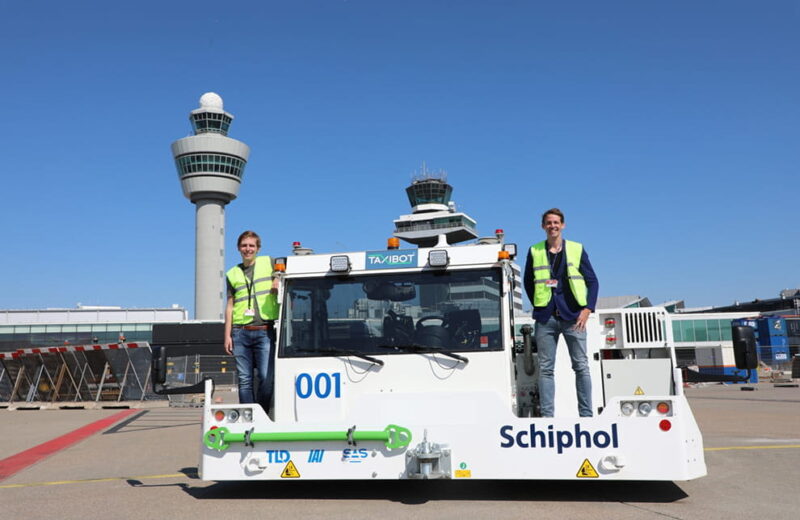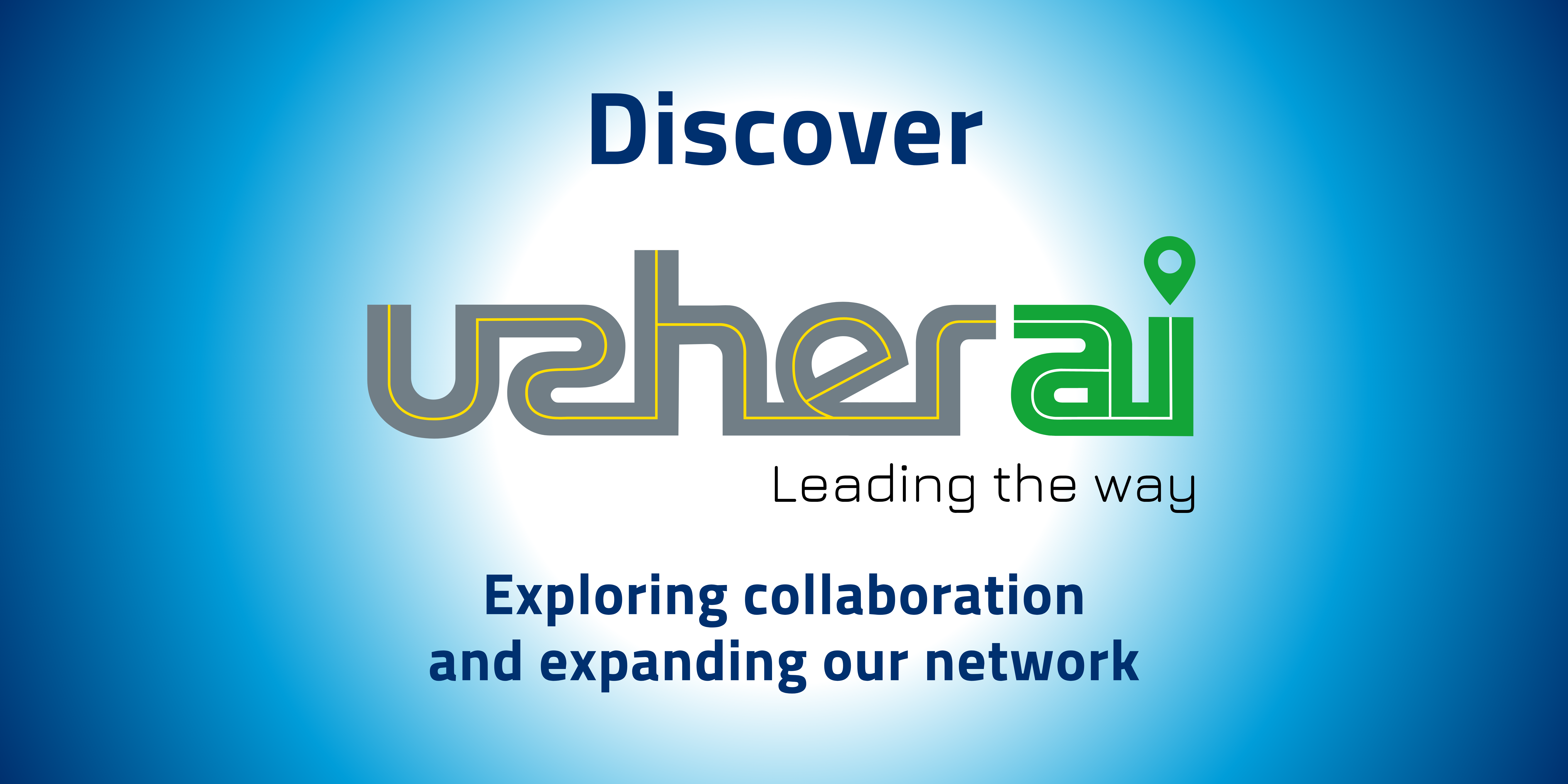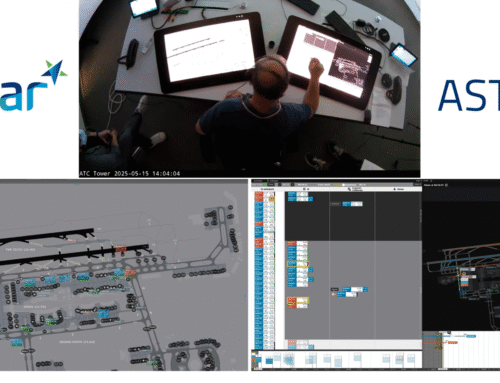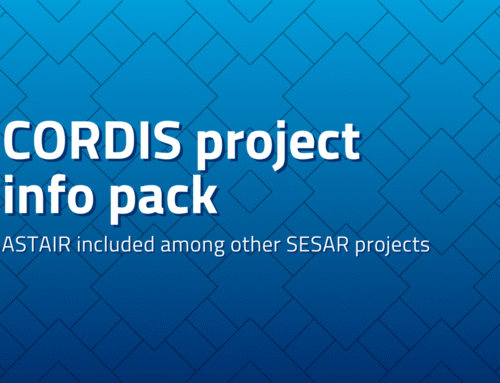Usher AI is a leading company specialising in airport operations, with extensive experience managing ground movements and the broader airport environment. From apron control and gate planning to sustainable taxiing and innovation in network management, Usher AI has played a crucial role in optimising complex airport processes. Their involvement in high-profile projects underscores their commitment to revolutionising the future of airport operations through automation and sustainability.
We speak with Dirk Bresser, co-founder of Usher AI, about the role his company plays in airport operations and its involvement in the ASTAIR project.
Usher AI’s involvement in ASTAIR marks a step towards integrating automation and sustainability into airport ground operations. Their experience in managing surface movements, combined with their cautious yet optimistic approach to AI, positions them as a key player in shaping the future of aviation.
By working closely with stakeholders and focusing on realistic, incremental changes, Usher AI aims to contribute to a safer, more efficient, and environmentally sustainable aviation industry.
What are your main areas of expertise and how is your company involved in the ATM industry?
We have vast experience in airport operations, specifically in surface movements managed by apron control and air navigation service providers (ANSPs). Our work spans various airport processes, including asset management, gate planning, towing/pushback operations, and sustainable taxiing. Our Schiphol trials with Taxibot, for instance, revealed major challenges in surface movement management and highlighted the need for Advanced Surface Movement Guidance and Control System (A-SMGCS) to reduce complexity. Our focus now is on automated follow-me vehicles, designed to optimise the total airport environment.

Credits: Usher AI
What attracted you to ASTAIR’s work, and why did you choose to join ASTAIR’s expert group?
ASTAIR’s goals align perfectly with our vision. We see automation and sustainability as the key to revolutionising ground operations. ASTAIR offers the opportunity to combine sustainable taxiing solutions with automation technology. This combination has wide-ranging benefits, not only for operational efficiency but also for safety and environmental sustainability. The collaboration allows us to contribute our expertise while benefiting from the research of like-minded partners.
What are the key benefits of ASTAIR’s research for different stakeholders in the aviation industry?
ASTAIR’s research has the potential to benefit all stakeholders, from ANSPs to airlines and airports. By addressing the operational and cultural challenges of aviation, it aims to introduce safer, more efficient, and sustainable ground movement processes. The project is a strong message that while change is necessary, it must be carefully managed to ensure safety remains the top priority.
In what ways do you foresee ASTAIR benefiting operational efficiency within your organisation?
ASTAIR provides a foundation for sustainable ground movements. By bringing together experts, it enables a realistic assessment of automation challenges, particularly in the culturally conservative aviation sector. The project will help Usher AI lead the way in demonstrating the safety and feasibility of auto-steering and automation technologies in aviation ground operations.
How important is AI technology in aviation and what challenges do you anticipate in integrating it?
At Usher, we believe that simplicity should be at the heart of any system. We continue to rely on 30-year-old, proven technology (in container terminals and automated people movers) to guide aircraft on the ground, as it consistently delivers results. While AI can be valuable for tasks like detecting Foreign Object Debris (FOD) or other specific features, we must be cautious with unproven, complex AI models, as stakeholder acceptance is essential. In many cases, the urgency to adopt these systems isn’t immediate, since aviation tends to move slowly and will likely keep humans in the loop for the foreseeable future.
This presents a unique opportunity for automation and AI, not to replace humans, but to assist them. One constant challenge in aviation is the deeply ingrained safety culture, which often resists rapid change. While this conservatism ensures safety, it can sometimes clash with the need for innovation. That’s why it’s important to approach change collaboratively, taking gradual steps toward the future of aviation. Ultimately, the focus should be on using proven technologies, involving all stakeholders, and progressing incrementally to build the aviation of tomorrow.
What challenges do you anticipate in implementing ASTAIR’s findings and how can the Advisory Board help?
The main challenge is stakeholder acceptance. The success of ASTAIR’s findings will depend on involving all stakeholders in the process, starting with small-scale trials and gradually proving the safety and efficiency of new technologies. The Advisory Board plays a crucial role in ensuring this collaborative approach, helping to build trust and buy-in from all parties involved.





